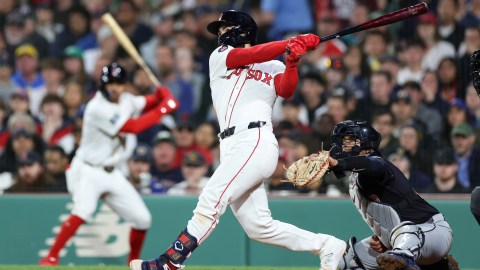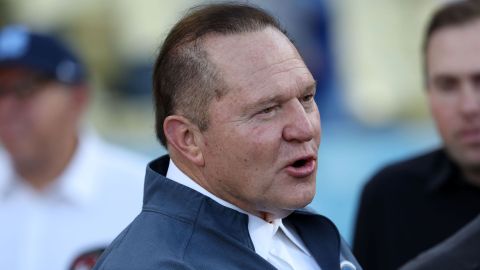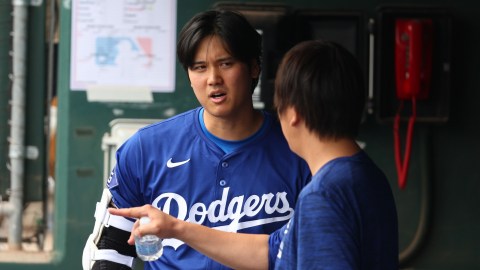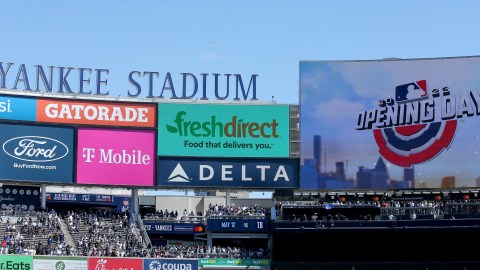For all the awkward moments that the NHL Fantasy Player Draft gave us, including Phil Kessel’s get-me-outta-here face when he was given a new car as a parting gift for being picked last, it was unique. It may also offer up ideas as to how other sports can spice up their All-Star games.
If one sport needs to spice up its All-Star game, it is baseball. Efforts to make the game count for something, home-field advantage in the World Series, have been minimally effective. There remains a massive roster each year that makes several players part of the party but never part of the game — they ride the pine wondering if the game goes 13 innings and they will actually get an at-bat. We’ve had one tie, almost another and box scores larger than a DNA code.
MLB commissioner Bud Selig would sooner shoot steroids in public than allow it, but consider the intrigue with a fantasy draft at the Midsummer Classic. We already have seven million people playing fantasy baseball leagues, and many of those players will tell you that their favorite portion of the season is the draft. Being able to analyze the remaining talent at a particular position and make a selection offers up the nerdiest of us a moment of exhilaration.
Imagine someone like Dustin Pedroia making those calls as he fills out an All-Star roster opposite another captain such as Ryan Howard. Not only would the comedic factor be in play, it would be extremely intriguing to see who they choose, and what they’re left with once the selections are all done. Maybe a pitching staff that includes Roy Halladay, CC Sabathia, Jon Lester and Adam Wainwright, perhaps facing a lineup that features Ichiro Suzuki, Chase Utley, Josh Hamilton and Albert Pujols?
The best part of the All-Star game is the individual matchups between pitchers and hitters. When guys like Halladay face guys like Hamilton, we have to watch. Yet, such encounters engender excitement regardless of which league a player is from. Great duels would still take place, and with a draft we may even have some precious moments in which teammates face one another.
Pedroia taking on Lester would certainly get some New Englanders to the edge of their seats.
In addition to being an idea that the union would never buy into, it is not without pitfalls. Even with interleague play, some of these players never cross paths. A captain might be reluctant to choose a star with which they are not familiar. Pedroia may choose the six other Red Sox All-Stars and 12 other AL East guys, just because that’s what he knows. The mixing of talent may never reach the levels some would like to see.
Then there’s the small matter of each manager not having familiarity with certain pitchers. Perhaps Charlie Manuel would shy away from using a young Kansas City reliever because he doesn’t know enough about him.
However, Pedroia would be on the same side as his six Red Sox teammates in the traditional model, and young Kansas City relievers often don’t get used anyway. Neither of those issues are major.
What would not float is the idea that pitchers who make $22 million a year can go into a midseason event with such uncertainty. The union would never allow it. Plus, purists and old-timers who were there when the AL and NL hated one another would cause such a stink. But let’s be honest. Player movement being what it is, the pool of talent is so fluid. Nearly 30 members of the 2010 All-Star teams had played in both leagues at one time or another in their careers.
The identity of these players is not by league anymore. It is by position, skill and personality, the very qualities that would make a strategic draft absolutely captivating.
Hockey took the gamble it did in mixing up its All-Star game for obvious reasons. The game had become meaningless, purely an exhibition. Rather than try to add meaning, the NHL embraced the exhibition aspect of things and made it even more of one. There is no forced significance to the game, just a collection of talent playing alongside both teammates and rivals and offering up a different look every single year.
Sounds like something that would add a little life to baseball’s once-great All-Star Game.
What format would you like to see the MLB All-Star Game use? Leave your thoughts below.



